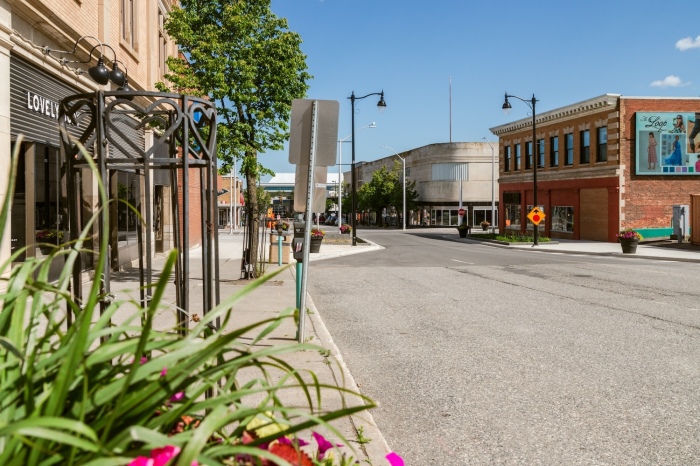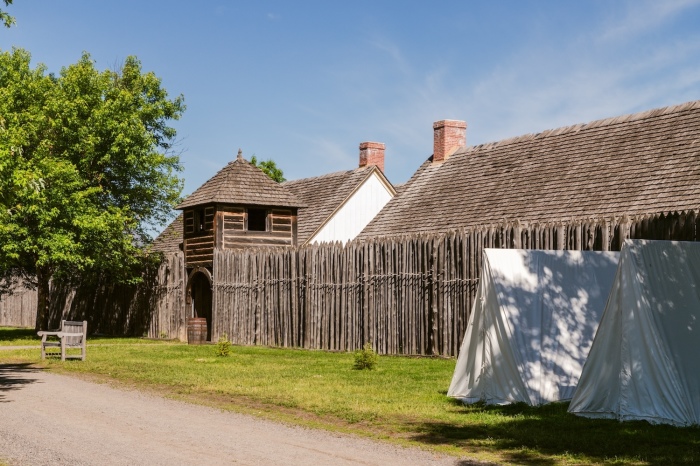Travel: In the middle of nowhere on Lake Superior, a city defined by industry

“Nobody really comes here,” the waiter at my hotel said. “People only stop when they’re driving through.”
I heard that a lot during my recent three-night visit to Thunder Bay on the north shore of Lake Superior in Ontario, Canada.
I chalked the defeatism up to location. There is no denying that Thunder Bay is in the middle of nowhere. And as they say, location is everything.
The closest big city, Winnipeg, Manitoba, is some 430 miles away. The drive takes nearly eight hours, as I discovered when mechanics for the Canadian airline WestJet unexpectedly went on strike, stranding me with no other flight option. Thankfully, Avis had a car that I was able to rent. Even farther away is Toronto, the provincial capital and Canada’s biggest city. The 860-mile drive takes just under 15 hours. That’s like driving from Raleigh, North Carolina, to Key West, Florida.
Those who make the effort to get here will be rewarded by a place that has a surprising number of things to do and see. It’s also an astonishingly good value, thanks to a favorable exchange rate ($1 is $1.39 Canadian at the time of this writing).
The city of Thunder Bay with its population of 108,843 souls is a relatively recent creation, resulting from the 1970 merger of Fort William and Port Arthur — twin cities that were once bitter rivals for commerce and industry.

The downtown in the former Port Arthur felt on the rebound, thanks to revitalization projects like the trendy Goods & Co. Market in a one-time department store. A short walk away and separated from downtown by a main road and still-active railroad tracks is the waterfront at Prince Arthur’s Landing, which has been transformed in recent years into a marina and park.
What used to be Fort William couldn’t be more different. This downtown has a weary look to it, thanks to permanently closed shops and empty buildings. The piazza with a war memorial and fountains in front of City Hall was taken over by street drinkers at 8 o’clock on a Sunday morning. A couple blocks removed from this scene is St. Paul’s Anglican Church, a 116-year-old red brick edifice. Walking inside the Victorian Gothic interior is like taking a time machine back to when the British Empire was still a thing.
The jewel in Thunder Bay’s crown is its location on Lake Superior, the world’s largest freshwater lake.
Having been to the other port cities on the Great Lakes, I can’t think of a place with a better view. The natural, deepwater harbor is framed by Sleeping Giant, a mesa formation that looks like something you might see in Colorado or Wyoming. Then, there are the castle-like old grain elevators that today serve as reminders of an industrial past.

Thunder Bay also has one of the best forts anywhere in Canada or the United States.
Fort William Historical Park is a reconstructed wooden palisade fort a few miles from its original location within the modern city limits. While called a fort, Fort William was never a military outpost. Instead, it was the site of Thunder Bay’s first industry. Voyageurs, trappers and traders gathered here every summer in the early 1800s at the peak of the fur trade and shortly after American independence created the border some 40 miles to the south.
If you go
Book a room at the Delta. This Marriott branded hotel faces the waterfront and has rooms with incredible views of Lake Superior and the Sleeping Giant.
Also at the landing is Bight, an upscale restaurant with outdoor seating and good people watching. Other options for dinner are Red Lion Smokehouse and Nook. For lunch, Goods & Co. Market has a handful of great casual options.
Fort William Historical Park has several major annual events, including a reenactment of the fur trade rendezvous. It’s open March through November. For those with an interest in history the Thunder Bay Museum is worth a visit.

Sail Superior offers several public and private boat tours, including a daily family friendly harbor tour at 4 p.m.
Half-day trips from Thunder Bay include Kakabeka Falls — Ontario’s second-highest waterfall — and the gorge at Ouimet Canyon. Both are provincial parks. While the 330 feet deep, 490 feet wide gorge is always picturesque, it’s best seen during the fall colors. Nearby is Eagle Canyon, a commercial attraction that bills itself as Canada’s longest pedestrian-only suspension bridge.
Thunder Bay’s airport isn’t served by a U.S. airline. I would avoid booking anything on WestJet, as it’s an awful airline with horrendous customer service. Instead, either fly through Toronto on Air Canada or Porter or fly into Winnipeg and do the long drive. From the United States, Minneapolis is a six-hour drive.
Dennis Lennox writes a travel column for The Christian Post.
Dennis Lennox writes about travel, politics and religious affairs. He has been published in the Financial Times, Independent, The Detroit News, Toronto Sun and other publications. Follow @dennislennox on Twitter.




























